The last year of the “We” decade proved to be an exceptional year for muscle cars, with more models available than ever before. The power ratings were off the charts, and the paint jobs, graphics, and spoilers were wilder than ever before. At the time, insurance companies had not completely restricted the fun.
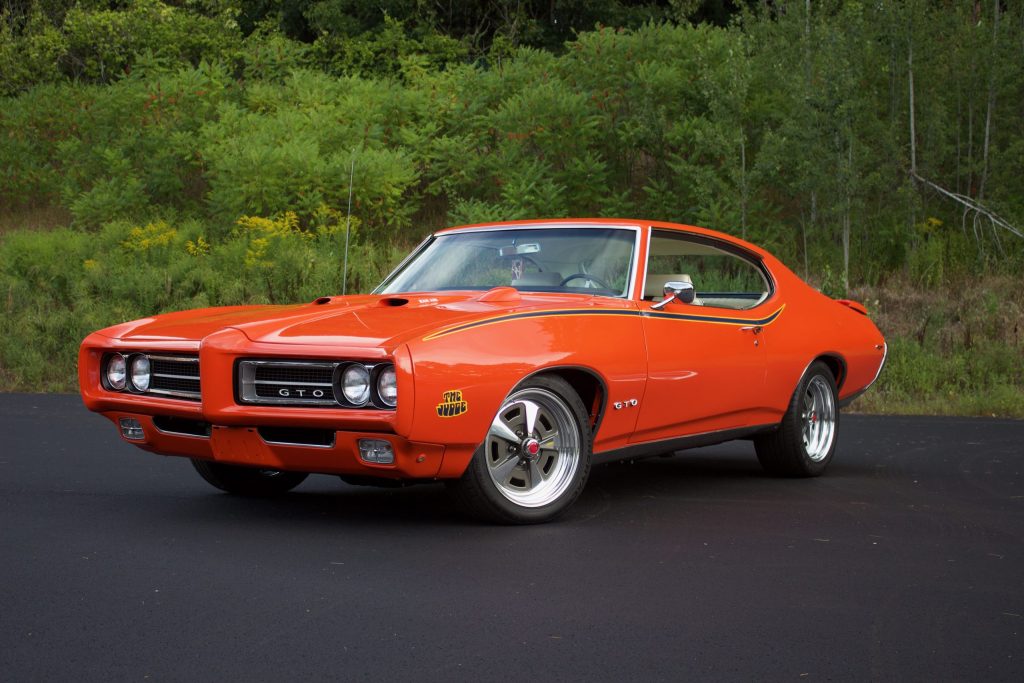
Pontiac’s GTO is recognized as the car that essentially created the muscle car genre. In 1968, the redesigned GTO, with its new Endura front bumper, helped the original regain traction in the market it created. However, it still faced fierce competition from all directions.
As the 1969 model was only to be subtly changed from the 1968 version, Pontiac General Manager John Z. DeLorean believed that a special edition could help increase sales. His ad hoc committee presented a Tempest post coupe with a 350 HO and affordable features that could rival the hot-selling Road Runner. However, DeLorean wanted a premium supercar to enhance the GTO’s image. When the committee presented the Judge, DeLorean approved it and later named it “The Judge,” after the catchphrase “Here come ‘Da Judge,” made popular on TV’s Rowan & Martin’s Laugh-In.
The Judge option added $337.02 to the base price of $3,156 for the GTO hardtop and $3,382 for the GTO convertible. The package included a 400-cu.in. D-port Ram Air engine, driver-controlled Ram Air, Judge emblem on the glovebox door, three-speed manual trans with Hurst T-handle floor-shifter, 3.55-geared rear end, Judge stripes and callouts, a 60-inch rear airfoil, blacked-out grille, HD springs and shocks, and Rally II wheels sans trim rings with G70 x 14 blackwall tires.
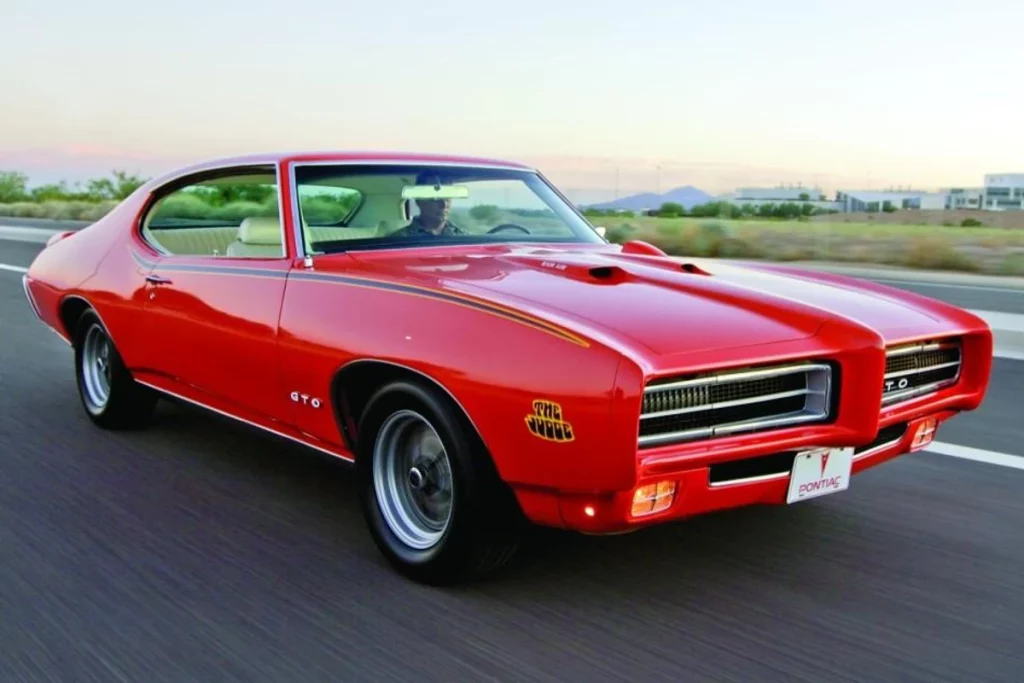
Approximately the first two thousand Judges built had Carousel Red paint, which appears more orange, but other color options were later added. Though most of the rest of the Goat’s option list was available on the Judge, the only engine option was the 370-hp Round-Port Ram Air IV 400.
The Judge was announced in December 1968, and production began in early 1969. Total production for the first year was 6,833, and the specialty GTO fulfilled its role of drawing attention to Pontiac and the GTO through its bold visual cues, a media barrage of print and TV ads, and its participation in road tests published in several enthusiast magazines.
The Judge returned in 1970, but only 3,797 were sold. Sales dropped to just 374 in its final and truncated model year of 1971. Nevertheless, the Judge’s bold styling and strong performance in all three years have ensured that they remain highly valued today.
ENGINES
In the muscle car era, the engines were the heart of the car. The Pontiac GTO was no exception, and the Judge edition came with special engine options that made it stand out.
The standard GTOs came with the 350-hp L78 400 engine, but the Judge came with the L74 366-hp D-port Ram Air engine, later known as the Ram Air III. With a 10.75:1 compression ratio, the L74’s block was drilled for four-bolt mains, but it was built with two-bolt caps. The engine featured a nodular-iron crank, cast rods, and pistons.
The manual transmission Judges, and GTOs, were fitted with the 744 cam, but partway through the model year, it was replaced by the milder 068 cam. The Ram Air automatic Judges and GTOs used the 068 cam. The Judge had D-port heads with 2.11/1.77-inch valves, 1.50:1 ratio rockers, a cast-iron dual-plane intake manifold, Rochester Quadra-Jet carburetor, breaker-point ignition, and driver-controlled Ram Air. The exhaust system included free-flowing manifolds and 2.25-inch headpipes, mufflers, and tailpipes.
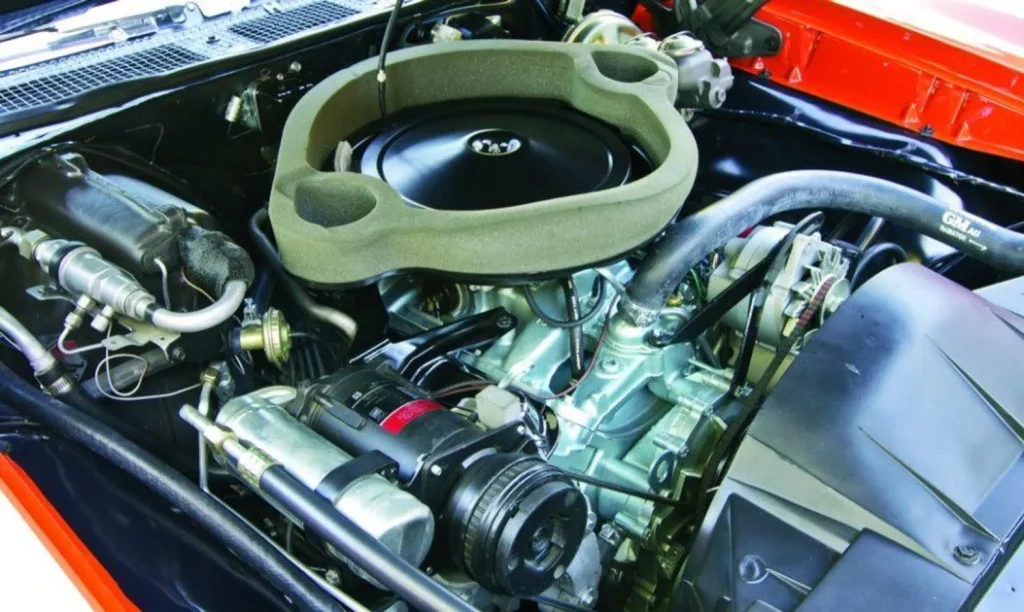
The new L67 370-hp Ram Air IV 400 engine was an improvement of the Round-Port 1968½ Ram Air II engine. It had larger ports on the aluminum intake manifold and larger intake ports on the heads, matching the already larger-than-a-D-port round exhaust ports. The engine also had higher ratio 1.65:1 rocker arms, 308/320-degrees advertised duration 041 cam, limited-travel hydraulic lifters, 11/32-inch pushrods, HD valve springs, and 2.11/1.77 valves.
Any Ram Air IV Judge is highly valued, but keep in mind that the option couldn’t be ordered with A/C and required the Turbo Hydra-Matic or M21 and the HD 3.90 or 4.33 Safe-T-Track rear axle.
When purchasing a Judge, it’s important to verify all engine codes and date codes. The engine code is stamped on the front passenger side of the block below the cylinder head deck. D-Port GTO heads have a code cast into the center exhaust ports, and Round-Port heads have one on the #1 and #8 exhaust ports. To verify that the engine is original to the car, check for a number that begins with 2 (for Pontiac) followed by the last several digits of the VIN.
Pontiac V-8 engines are reliable and perform well when properly maintained. Look for signs of neglect and leaks, including valve cover oil leaks and seepage at the front cover and intake manifold union. Listen for odd noises and look for smoke from the tailpipes.

If you are interested in purchasing a Judge, make sure to verify the engine codes and dates to ensure that you are getting an original or correctly replaced engine. These cars are highly valued today and are a symbol of the muscle car era.
TRANSMISSIONS
The Judge edition of the Pontiac GTO came with various transmission options, adding to its versatility and performance.
The standard transmission was a Hurst-shifted three-speed manual, which was enclosed in an aluminum bellhousing with a 10.4-inch diameter clutch. The four-speeds, which were available at an extra cost, were also Hurst-shifted and included the Muncie M20 wide-ratio and M21 close-ratio, both of which required 3.90 or 4.33 rear gears.
The M40 three-speed Turbo Hydra-Matic was also optional and included the new-for-1969 Rally Sports shifter when ordered with a console. The Rally Sports shifter had detents in the mechanism that allowed safe manual upshifting. It replaced the His and Hers Hurst shifter of the previous year. If the console was not ordered, a column shifter was standard.
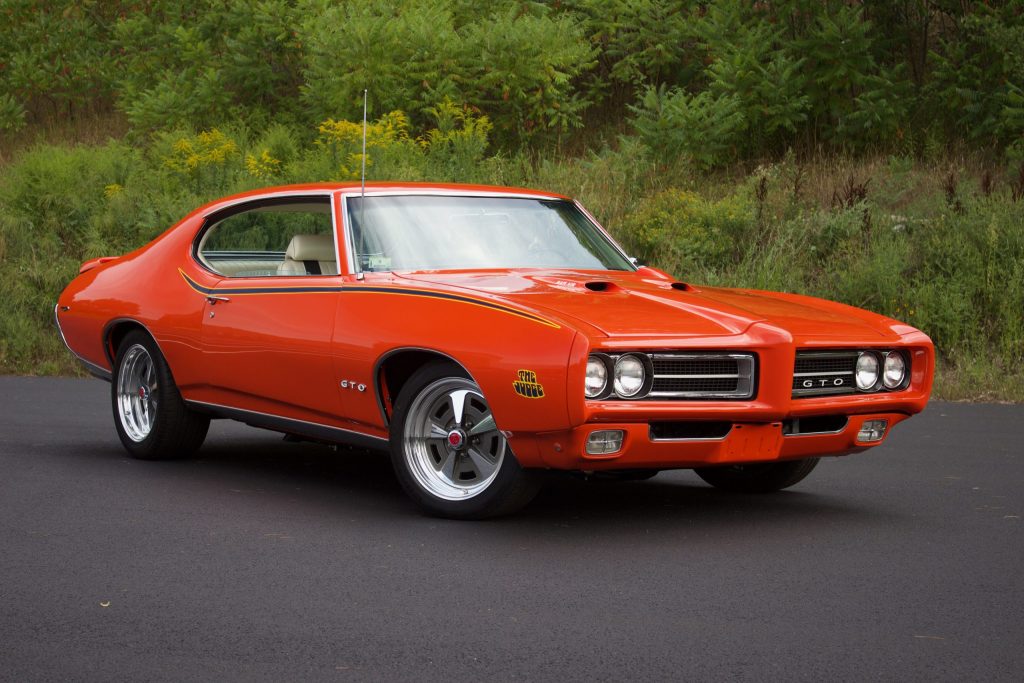
The various transmission options gave buyers the flexibility to customize their driving experience, from the traditional manual to the convenient automatic transmission. The Hurst and Muncie transmissions were well-regarded for their smooth shifting, while the Turbo Hydra-Matic offered a more modern, convenient option.
Overall, the transmission options contributed to the Judge’s reputation as a high-performance, versatile muscle car that could satisfy the needs of any driving enthusiast.
REAR AXLE
The standard rear axle for the 8.2-inch 10-bolt was equipped with 3.55 gears for the Judge option. However, if the optional air conditioning was ordered, the gear ratio would be reduced to 3.23. For an extra fee, the Safe-T-Track (limited-slip) would be installed with a heavy-duty four-pinion unit for the 3.55, 3.90, and 4.33 gears.
WHEELS AND TIRES
Rally II wheels, measuring 14 x 6 inches, were fitted with G70-14 blackwall tires as standard. There were also other tire options available as upgrades.
FRAME, SUSPENSION, AND BRAKES
The 112-inch wheelbase perimeter frame with torque boxes from the 1968 model was carried over. Convertibles received boxed side rails to improve stiffness. Selecting the heavy-duty frame option installed a convertible frame under the hardtop body.
The coil springs were chosen through computer selection to suit the added weight of optional features. The basic short/long arm front suspension was retained, featuring coil springs, shocks, and a 1.00-inch anti-roll bar.
The standard steering system had a 24:1 ratio, providing 5.6 turns-to-lock. However, the optional power steering had a 17.5:1 ratio, reducing the turns-to-lock to 4.2.
The rear suspension had upper and lower control arms, coil springs, and shocks to support the 10-bolt rear axle. The ride and handling package included revised spring rates and shocks.
The standard manual four-wheel drum brakes were 9.5 inches in diameter, with a front width of 2.5 inches and a rear of 2 inches. Power assist and power front disc brakes with 10.94-inch rotors and single-piston calipers were optional.
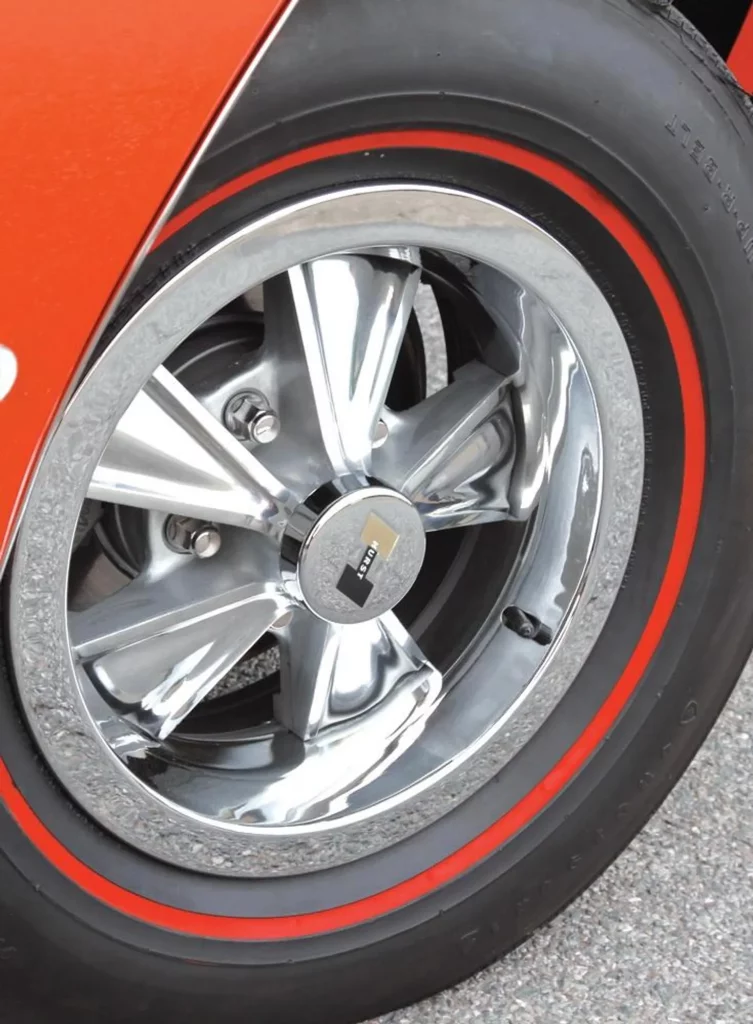
Before the test drive, a visual inspection should be conducted to determine the extent of potential frame damage or rust. Frames commonly rust along the side rails and at the torque boxes. Suspension wear items and the condition of the floorpans should also be checked during this inspection.
BODY
The 1969 GTO had only minor refinements following its significant redesign the year before. The grilles, front valance panel, and side marker lamps were updated. Judges now featured “The Judge” decals on the front fenders and rear airfoil, with “Ram Air” and “Ram Air IV” callouts for the standard and optional engines, respectively.
Judges also had a tri-colored side stripe that ran from the front fender to the quarter window’s rear edge. Pontiac recommended different color combinations for the stripes to match specific body colors, including blue primary with red-and-yellow accent stripes, black with red-and-white accents, and green with yellow-and-white accents.
The GTO crest was replaced with “GTO” lettering on the front fender, and the rear side marker lamp was shaped like the crest. The taillamps were repositioned to appear to float between the body and redesigned rear bumper. The 60-inch airfoil on the decklid was available in two designs, tailored to the hardtop and convertible upper quarter panels’ contours. The torsion bars were modified to support the added weight of the rear spoiler.
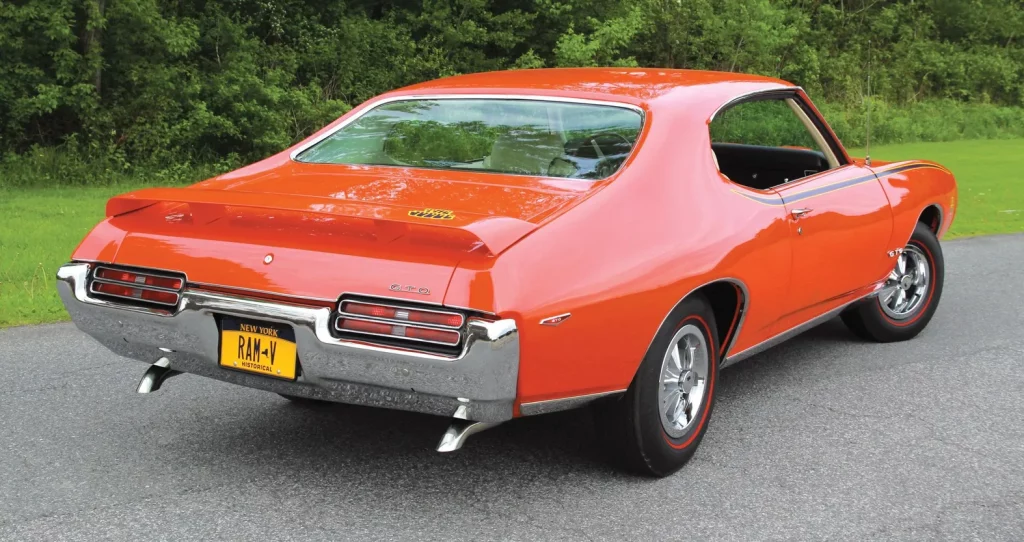
The vent windows were removed to give a cleaner look, and a new upper-level ventilation system was installed to compensate for the loss. The 1969 Judge measured 201.5 inches in length and 75.8 inches in width. Hideaway headlamps were optional.
The Vehicle Identification Number (VIN) can be found on the driver-side base of the windshield. An example of the VIN code is 242379G100000, where 2=Pontiac, 42=GTO, 37=hardtop (67=convertible), 9=1969, G=Framingham, Massachusetts, assembly plant, 1=1-5 denotes V-8, and 00000 represents the sequential serial number.
Although “42” identifies a GTO, the VIN does not specify if it has the Judge option. The best way to confirm if a Judge is genuine is to acquire factory documentation, available for a fee through PHS Automotive Services (www.phs-online.com).
INTERIOR
The instrument panel underwent significant changes, although the three-pod theme was retained. The pad now surrounded the panel, which featured a two-tier design with a padded upper tier and a lower one housing the switchgear on wood-grained appliqué. The gauge backgrounds changed from steel blue to black, and the upholstery patterns on the seats and door panels featured an upright “Y” theme. Headrests became standard equipment in January 1969.
Optional Rally gauges were available with the instrument panel tachometer or a clock, and the extra-cost hood tach could be paired with the latter or ordered separately. Several radios and an AM/FM stereo were offered, as well as a redesigned 8-track tape player. The Ram Air system was operated using a knob and cable under the dash.
The optional Custom Sports simulated wood wheel received an updated cushioned horn button, and the ignition switch was moved to the steering column.
RESTORATION & PERFORMANCE PARTS
There is a broad range of restoration and performance parts available to restore or enhance a 1969 Judge. While the availability may not be as abundant as that of the Camaro or Mustang, there is still an excellent selection of GTO and Judge parts, albeit at a higher cost.
Various reproduction body sheet metal, floors, trim, interior, chassis, and drivetrain components are available. However, not all parts are readily available, such as reproduction stock replacement engine blocks, D-port iron heads, transmissions, or rear ends, which may require restored used parts. Despite having reproduction Endura bumpers and front fenders, they are still prone to quality issues.
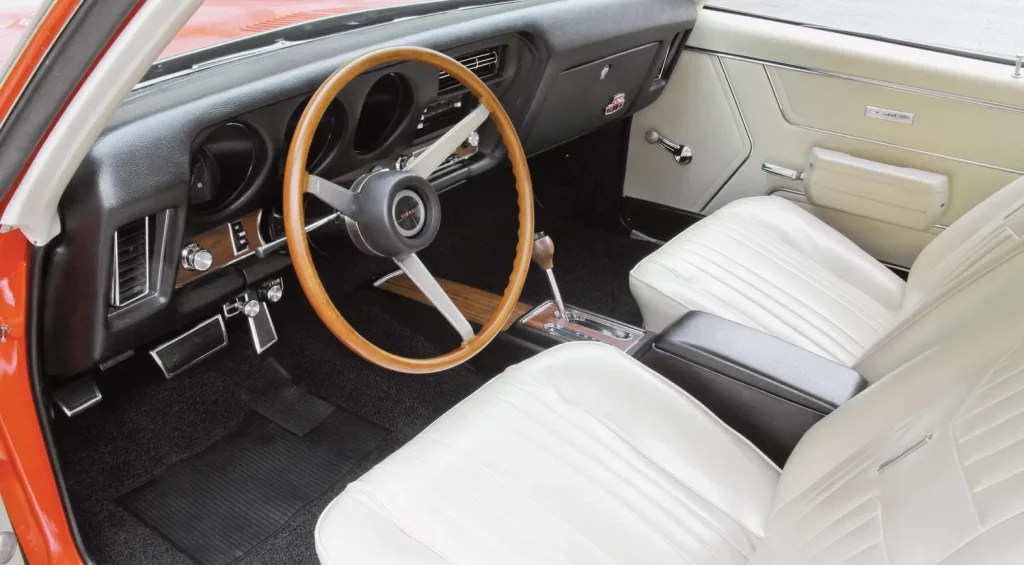
Performance upgrade options are extensive as well. Aftermarket blocks for large-bore Pontiac V-8s, as well as cast and forged cranks, forged rods and pistons, and various stroker kits, are available. Camshafts from solid and hydraulic flat-tappet to solid and hydraulic rollers can be purchased. There are various aluminum cylinder heads and intake manifolds on the market for the top end, along with numerous carburetor and EFI options. Hi-po exhaust manifolds, headers, and full-performance exhaust systems are available as well.
Upgrading to an overdrive manual or automatic transmission is possible with various kits. New limited-slip units can be sourced for the stock 10-bolt or replaced with a complete 12-bolt assembly.
Suspension upgrades range from higher-rate springs, larger anti-roll bars, and improved shocks to modernizing the suspension design, and even buying new aftermarket frames fitted with current suspension technology. Brake upgrades range from simple swaps to factory-style front discs on a drum brake Judge to “big brake” swap kits with mega-sized rotors and multi-piston calipers.
Despite the plethora of performance options, restoring the Judge to stock is generally the best value, particularly for the rare convertible, as it retains its collectible value. However, some owners still desire increased power and comfort and choose to modify their Judges while maintaining a stock appearance.
FEATURED JUDGE
Todd Hood, owner of Hood’s Etc. Collision Center in Tucson, Arizona, has modified his 1969 Judge to meet his performance requirements. He added a stroker kit and other internal upgrades to its non-original Ram Air engine to increase power while lowering the compression ratio to 9.5:1 to run better on pump gas. Todd also installed a five-speed transmission that didn’t require modifying the trans tunnel and made the stock Hurst shifter handle and T-handle compatible with it. The larger-than-stock 15 x 7-inch Rally II wheels, with modern Goodyear radial rubber, and larger exhaust tips are subtle hints to the Judge’s modified status. Although Todd is happy with the upgrades, he acknowledges that if the Judge had its original Ram Air engine and transmission when he purchased it, he would have restored the car to stock.